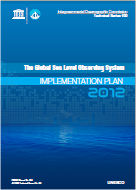
The Global Sea Level Observing System (GLOSS) programme updates its implementation plan
The Intergovernmental Oceanographic Commission (IOC) of the UNESCO publishes the new implementation plan of the Global Sea Level Observing System (GLOSS). The updated implementation plan copes with the new challenges in the field of monitoring sea level for a better understanding of the processes behind sea level rise and variability.
Source :
Technical Secretary for the Global Sea Level Observing System (COI/UNESCO).
Contact :
Guy Wöppelmann
Chair of the GLOSS Science Steering Group
Tel. +33 5 46 45 86 13
Briefly :
The implementation plan provides an overview of the GLOSS programme and its current status as well as a description of the scientific and operational requirements raised over the past years by advisory groups and panels.
The focus remains the GLOSS Core Network (GCN) of stations and the datasets that result from this network. Nonetheless, it is worth highlighting that the new plan calls for two significant upgrades to the GCN motivated by scientific and operational requirements :
– All GCN stations are required to report data in near-real time, which will be tracked at a Sea-level Station Monitoring Facility. This will involve upgrades in power, data acquisition platforms, and communication packages. However, these upgrades are cost-effective in terms of the benefits that a real-time system will provide for ocean monitoring and improved station performance due to early detection of station malfunctions.
– Continuous measurements of Global Navigation Satellite Systems (GNSS), in particular the U.S. Global Positioning System (GPS), the Russian GLONASS, or the newly established European GALILEO, or equivalent systems, in the vicinity of the primary tide gauge benchmark (TGBM) are required for all GCN stations. This upgrade will support satellite altimetry calibration and research efforts aimed at determining rates of geocentric global sea-level rise as well as regional changes in sea level. In this line, SONEL plays the role of GNSS at tide gauges data assembly center for GLOSS and provides information on its status through a web-based service. (See the dedicated SONEL webpages).
Further reading :
– Link to the GLOSS implementation plan in PDF format
– Link to the official website of GLOSS













